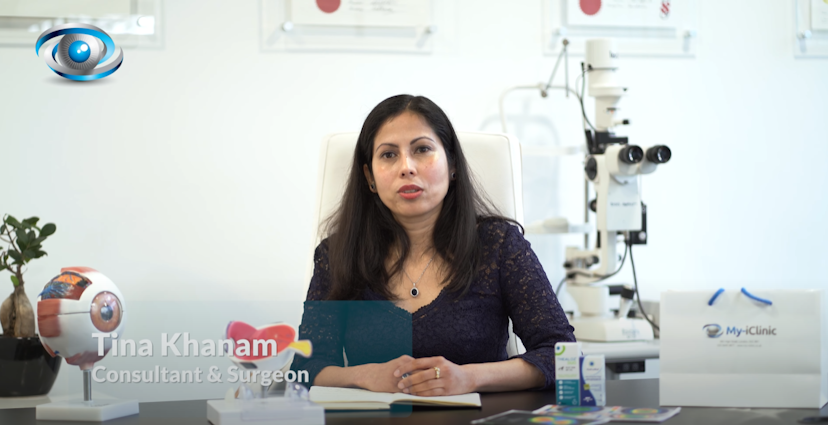
Keratoconus: What You Should Know
Keratoconus is a bilateral non-inflammatory eye condition that affects the development of your eye. Rather than your eye growing in a sphere shape, those with Keratoconus (also known as KC) develop a cone-shaped cornea that progressively things, causing a bulge to form on the eye.
Sufferers of KC tend to suffer from significant visual impairment, requiring treatment. On November 10th, we celebrate World KC Day sponsored by the National Keratoconus Foundation, a day that raises awareness nationally about the eye condition Keratoconus.
The National Keratoconus Foundation are dedicated to raising awareness about Keratoconus to patients, families and eye care professionals through releasing literature and seminars, and raising funds to support scientific research into causes treatment and a possible cure for the condition.
According to the National Keratoconus Foundation, symptoms include:
- Increased light sensitivity
- Difficulty driving at night
- A halo around lights
- Eye strain
- Headaches and general eye pain
- Eye irritation
What Is The Cause Of Keratoconus?
According to NHS England, Keratoconus affects up to one in 3000 people and affects 5–15% of people with Down syndrome. Typically, it is diagnosed in young people who are at puberty in their late teens or early twenties.
The exact cause is unknown, which is why the National Keratoconus Foundation is investing so much time and effort into finding a cause and a cure.
Currently, it is believed that genetics and environmental factors are an influence on the condition. However, scientists do not consider it to be an inherited disease although, in rare cases, some families encounter more than one individual who has been affected.
To diagnose Keratoconus your optician or ophthalmologist will carry out a number of tests that will measure any changes to the shape of your cornea over time. The tests include focus checks to give you your prescription, a measurement of the curve of your cornea to work out how much astigmatism there is and also a measurement of how thick your cornea is.
How Does Keratoconus Cause Significant Vision Impairment?
The cornea is responsible for refracting most of the light that comes into our eyes. If there are abnormalities of the cornea, the way we see the world and do simple tasks is severely affected, making it difficult.
As the eye is a cone shape rather than a sphere shape, an abnormal curvature is created known as an astigmatism. This can cause blurry vision, problems with glare and also light sensitivity. KC is also known to cause your eye to become more myopic (short-sighted) making distant objects appear blurred, while those nearer are clearer.
Occasionally, people with the condition can develop hydrops which is a sudden outbreak in the surface of the cornea, allowing fluid to enter the cornea and cause swelling.
This symptom can cause vision loss and discomfort. However, this will usually resolve spontaneously and does not require treatment.
Can Keratoconus Be Treated?
The main treatment used to help those who have KC is to try and correct the vision impairments caused by the condition.
Contact Lenses
To begin with, patients are given glasses. However, if the condition worsens, your optometrist may suggest hard contact lenses to help correct your sight. These lenses tend to be thicker and heavier than the soft kind and can also cause your vision to be distorted when you are looking through the edge of the lens.
Despite this, they provide a more even shape to your cornea which helps improve your ability to focus. If you are prescribed lenses, you may find that you have to change your glasses frequently due to your cornea being thinner and more flexible because of the condition.

Drops
In addition to a prescription of contacts and glasses, doctors may consider Corneal Cross-Linking. Corneal Cross-Linking is where doctors use special eye drops and ultraviolet A(UVA) light to help the damaged tissue in your cornea grow stronger.
This process stops the bulge on the eye from getting worse as it adds special bonds that work like support beams to help the cornea stay stable. If you do have or develop this lifelong condition, it is important to understand the nature of it so that you can learn to embrace it.
Having a lack of knowledge incites fear so it’s best that you do your research and ask your doctor/ophthalmologist all the questions you have.
Join support groups for those who are living with Keratoconus and find out how they find living with the condition and get advice from those who are dealing with it first-hand.
My-iClinic's Assistance With Keratoconus
Are you or a loved one struggling with Keratoconus? Look no further. My-iClinic is here to provide expert care and cutting-edge solutions for this challenging condition. Our experienced team of eye specialists is dedicated to offering personalised treatment plans tailored to your unique needs. With state-of-the-art technology and a commitment to compassionate care, we aim to restore your vision and improve your quality of life. Don't let Keratoconus hold you back any longer. Take the first step towards a clearer vision today. Contact My-iClinic and embark on your journey towards a brighter, clearer future.
Find out more by Speaking to our team









